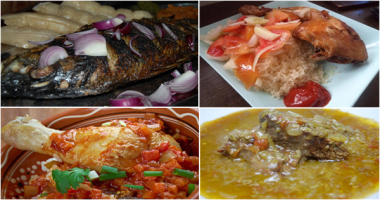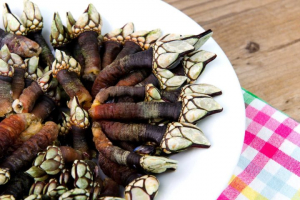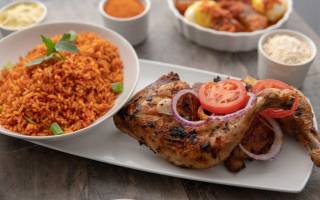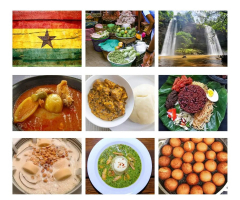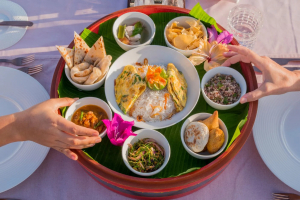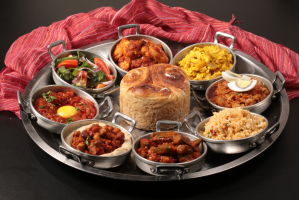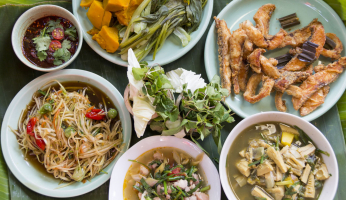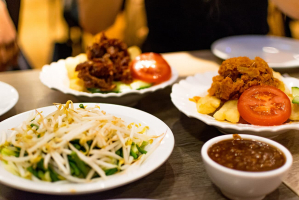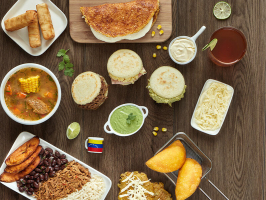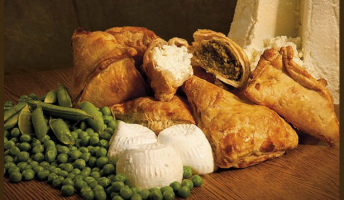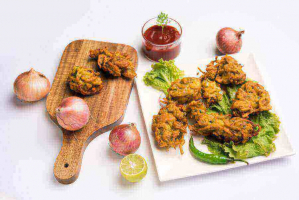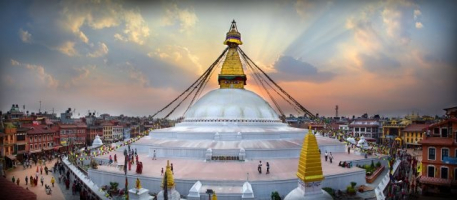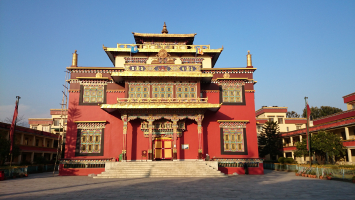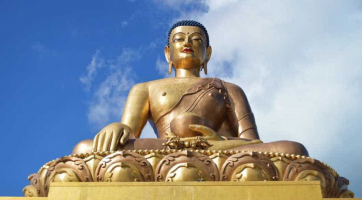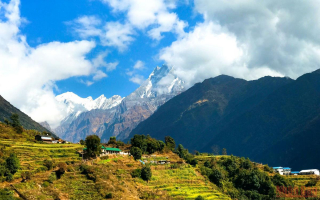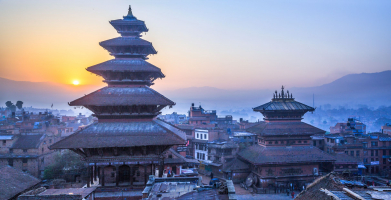Top 7 Nepal's Speciality Foods
Nepal has always been a destination containing countless mysteries from nature that is both majestic and religious structure. A highlight for tourism in this ... read more...country is the unique and rich cuisine. Let's learn some traditional Nepali dishes below to make the trip more perfect.
-
Dal-bhat-tarkari is a popular dish in Nepal. Dal is a lentil and spice soup eaten with cooked grain, bhat — generally rice but sometimes another grain — and tarkari, a vegetable soup. Condiments are often modest amounts of spicy pickle, either fresh or fermented, made mostly of dried mustard greens (gundruk ko achar) and radish (mula ko achar), of which there are several variations.
All of the ingredients for the meal are often kept separate in mounds and bowls and served on a big tin pan. A heaping dish of white rice is traditionally accompanied by a bowl of vegetable curry (tarkari), hot chili sauce or pickles (achaar), and a bowl of lentil-based soup. Sautéed greens (sak), boiled potatoes (alu), yogurt (dahi), and unleavened bread crackers (roti), to mention a few regional additions. And, in the Himalayas' distant altitudes (above 6,000 feet), where rice does not grow well, Bhat (boiled rice) is replaced with millet, buckwheat, maize, or barley grains known as Dhindo.
Locals enjoy the meal with their right hand (the left is considered unhygienic), pouring the Dal over the rice and then combining other seasonings with the Bhat mush before scooping it into their mouths. It takes some practice to get it right. It's a very intimate experience, and we tried it several times — the locals truly appreciate the effort!
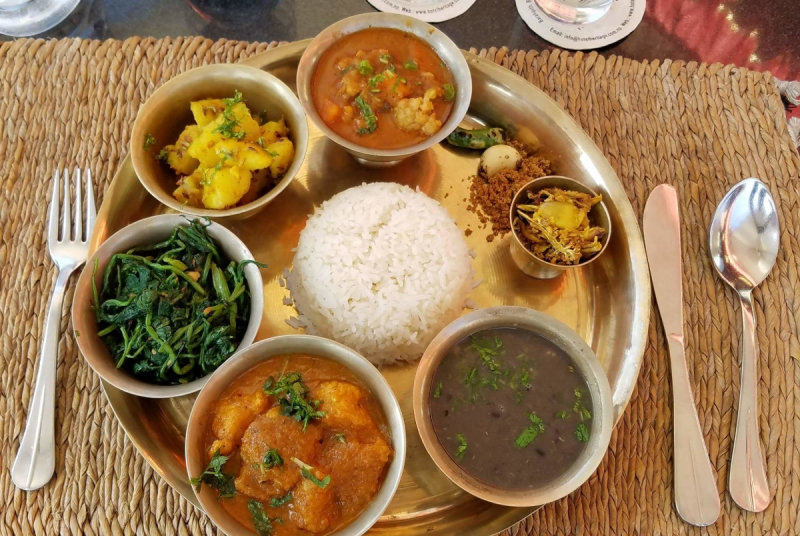
Source: VnExpress Source: Yummy Food World -
Momo is a sort of dumpling that is popular in Nepalese and Tibetan cuisines, as well as in the Indian states of Ladakh and Sikkim. It has evolved and expanded to numerous countries, which have altered and changed it to their liking.
The classic momo in Nepal is made with ground beef filling, however this has altered and grown more sophisticated in recent years. Momos may now be made with almost any mix of ground beef, veggies, tofu, paneer cheese, or a vegetable and meat combination. Momos are now given fancy names like meetho momo, swaadista momo, raseelo momo, Himalayan momo, and so on. Any sort of ground meat, such as goat, lamb, hog, water buffalo, yak, chicken, turkey, and marine food, can be used for filling, along with fresh herbs and spices. To offer a diverse flavor, two different types of meat and veggies are sometimes utilized. Traditionally, Nepalese prefer beef with a high fat content because it yields intensely flavorful, juicy momos. Because the tastiest momos are usually juicy, a little oil is occasionally added to the leanest varieties of ground beef to keep the filling wet. The vegetable filling can be made with any type of vegetable. The vegetables must be cut into very small pieces, and flavored with fresh herbs and spices and cooked lightly before being used as a filling.. If the filling mixture is too liquid, it will be difficult to close the dough wrappers because the filling will break apart. Potatoes and cabbage are a common vegetable pairing.
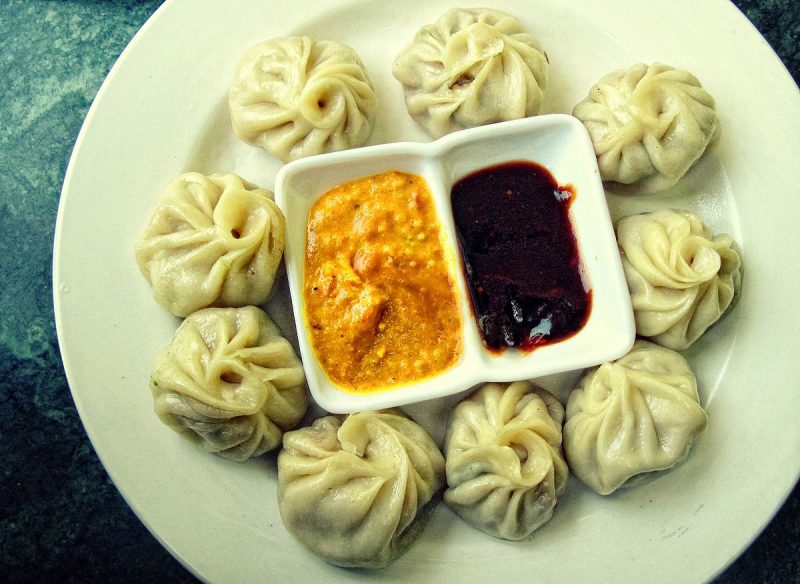
Source: wikipedia Source: Jyoti Food Channel -
Thukpa, a thick noodle soup with meat, egg, or just veggies, is a winter delicacy from Nepal's highlands that is frequently served with a side of momo. The thick meat broth of this soup is meticulously seasoned and may be produced from a range of meats, including yak, goat, lamb, and chicken, and is influenced by both Tibetan and Chinese cuisine.
While you're eating a steaming cup of soup with your family, tell them about living in a cold, harsh, mountainous area where hot, nutrient-rich soups aren't just a treat, but a need. Many people's favorite dish is vegetable thukpa. It's a lot like the Sherpa stew you'll come across while walking in the Everest region.
Thukpa may be found all across the nation, mostly in low-cost and mid-range cafés, and is nearly always offered in teahouses along hiking routes. It's especially nice on a chilly Kathmandu winter day, or after a few hours of climbing in the mountains, because it's quite warming.
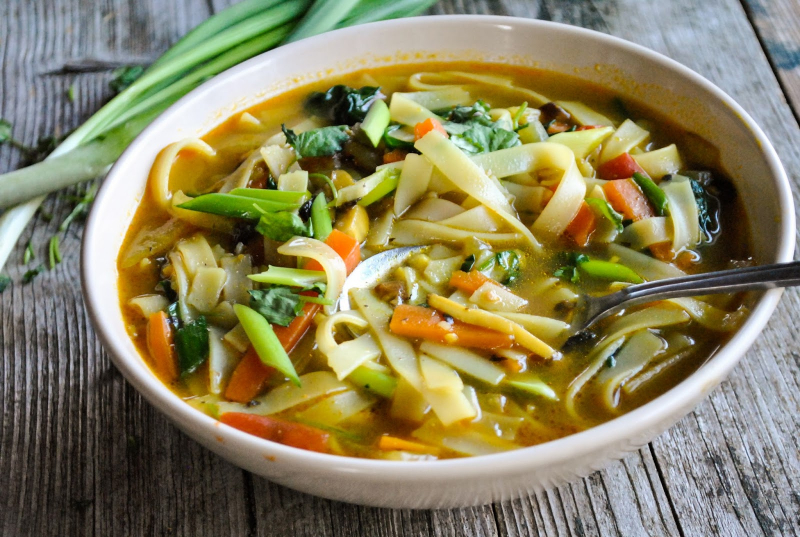
Source: VeganSandra Source: Rita's Kitchen -
Sel roti, a peculiar meal that looks like a mix between a doughnut and a bagel but is really composed of rice flour, is most commonly consumed during Hindu festivals Tihar and Dashain. This delectable deep-fried bread is crunchy, sweet, puffy, and soft, and makes a great breakfast or snack. It's commonly served with veggies or dipped in yogurt, but it's equally delicious on its own. When you're out and about with your kids, get it from street sellers so you can eat it when it's still hot and fresh. Since sel roti is a popular dessert offered during Nepal's two main Hindu festivities, you can go over some of Hinduism's most important elements if you choose.
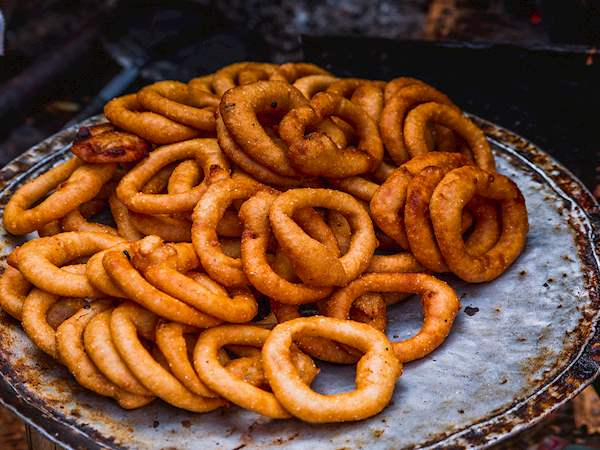
Source: World Food Atlas Source: Himalayan Mum's Recipe -
Many Nepalese dishes start with rice, and the fried variation, known as pulao, is particularly tasty. This popular dish is seasoned with turmeric and cumin and served with everything from yogurt to papadoms. Because it's a vegetarian meal, it's a great time to tell your kids about how the Buddha was born in what is now Nepal, in the town of Lumbini.
Even though Buddha and his early disciples were not strict vegetarians, many devoted Nepalis now are. They are adamant that Buddhism's first principle, "Do not murder," applies to all living beings. Meat does appear on Nepali menus, and if you're looking for steaks or minced meat, you should have no trouble finding it. Vegetarian meals are more plentiful in the highlands. Nepal's ethnic groupings, as well as its cuisine, are diverse.
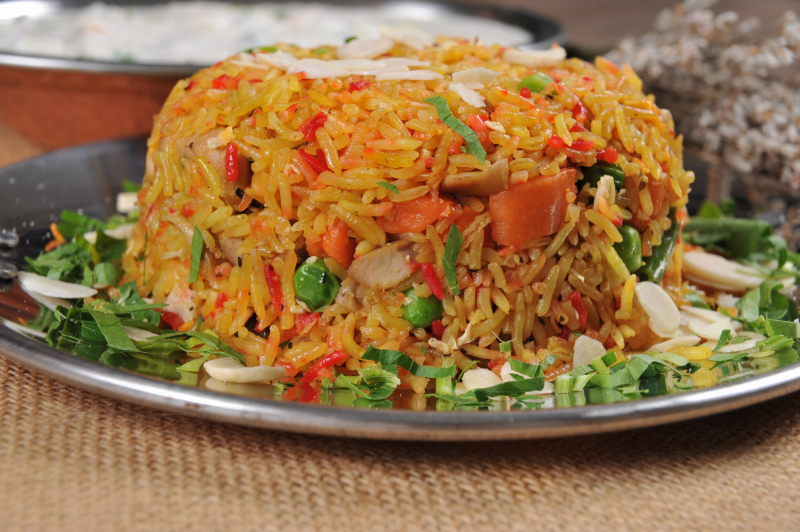
Source: Restavracija Maharaja Source: Easy Kitchen Recipes -
Dhindho (or Dhido) is a relatively unknown delicacy in Thamel and other parts of Kathmandu. Stone-ground buckwheat flour, millet with salt in water, and cornmeal are used to make this dish. People in Nepal's rural areas eat this thick porridge dish as part of their daily meal. It goes well with vegetable curries, butter, pickles, yogurt, and buttermilk.
It's a thick porridge or polenta made from buckwheat flour that's been cooked. Butter or ghee, which you stir into the Dhido with your hands, is traditionally served with it.
Dhido is a meal that has a long-standing place in the hearts of Nepalese people. A full stomach of a meal is represented by the food item. The farming in which crops were planted and the field was plowed to cultivate more of it. It all has a backstory that explains how Dhido came to be among the people over such a lengthy period of time. Modern Dhido has ushered in a gastronomic revolution. People prepare this cuisine for the nutrients they require as well as the historical flavor.
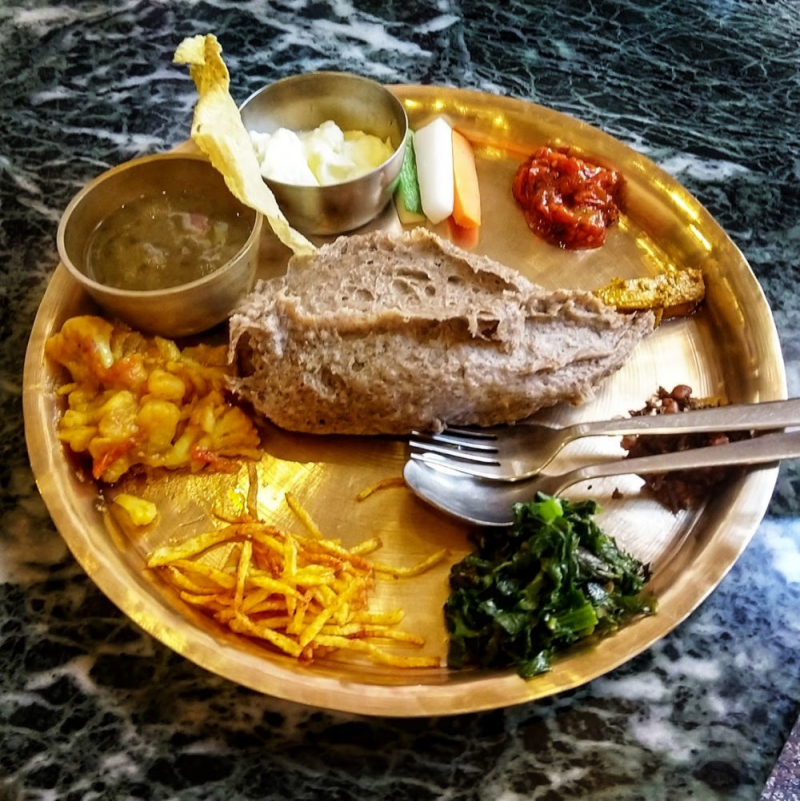
Source: World Travel Family Source: Yummy Food World -
Gorkhali lamb, another winter staple, is a hearty and satisfying curry meal. The curry is hearty, with slow-cooked lamb (usually lamb chops), chunky potatoes, and coarsely chopped onions. For added taste, the lamb is frequently grilled and coated with a chili mixture before being added to the sauce. Although rice is a lovely accompaniment to the completed meal, a good Gorkhali curry is sometimes best when scooped up with some roti. Many travelers go to Nepali Chulo in Kathmandu for a variety of curries from Newari and Nepalese cuisine, which has become famous for its live cultural acts and authentic Nepalese food.
Gorkhali lamb is traditionally made with lamb chops roasted on a charcoal barbecue and then finished in a chilli sauce, although cooking outside in the rain isn't much fun. This recipe has been modified to utilize shoulder of lamb. If you've never cooked with shoulder of lamb before, it's a rich, fatty meat that's best baked for many hours at a moderate temperature to make it juicy and slip off the bone without decomposing. Gorkhali lamb is often an extremely fiery and strong curry; however, this dish is medium hot and the flavors are significantly less penetrating, allowing the flavor of the lamb to shine through. Although there appear to be many stages in this curry, they are all extremely straightforward and only need a little time planning.
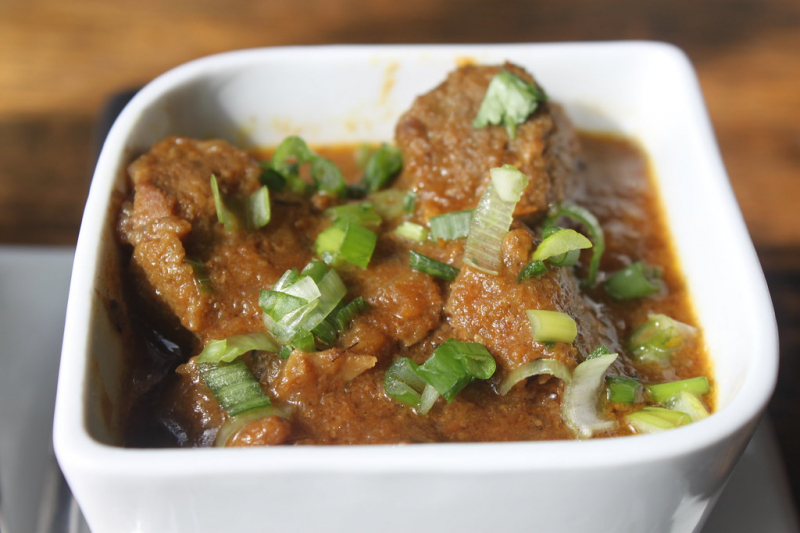
Source: Pinterest Source: Simple and Yummy Nepali Food









